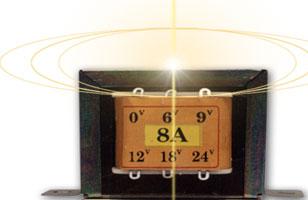Some Simple Tachometer Input Circuits
Tài liệu: Một số mạch điện đầu vào cho ứng dụng đo tốc độ
Here are a few simple circuits you can try. The two resistors and the small cap to ground forms a LP filter and the values shown will pass a freq. Up to 12,000 RPM. You can increase the value of the resistors to 4K7 without difficulty. They just need to be the same value. Try the .05uF cap and it can be increased to ~ .1uF. Any more and you may filter out some high RPM information.
Figure 1 is a simple diode clamp with the LP network. The circuit will clamp at the 5volts and you will get a square wave output from ground to +5. You can run this at a higher voltage … the equipment that you are feeding the circuit into is the limiting factor. I don’t like much over 8 volts myself.
Figure 2 is an excellent circuit and the one I use on my tachometer design. This circuit produces a very crisp edge on the pulses. It also divided the input by 2 so that you get on pulse for every two rising edges of the tach signal. This is quite useful for most microprocessors that are measuring the actual pulse duration to calculate RPM. You analogue tach works on frequency/voltage which is different.
Figure 3 is also a very good circuit I use frequently. This has the standard front LP filter and uses a PNP resistor. When the resistor conducts it will clamp the circuit to the control voltage and it produces a very crisp output rising edge trigger for your equipment. Most all tachometers are happy with this circuit.



 Tính toán quấn máy biến áp 1 pha tần số 50Hz
Tính toán quấn máy biến áp 1 pha tần số 50Hz  Cấu tạo, nguyên tắc hoạt động của Transitor
Cấu tạo, nguyên tắc hoạt động của Transitor  Nguyên lý và sử dụng nguồn xung hay bộ biến đổi nguồn DC-DC
Nguyên lý và sử dụng nguồn xung hay bộ biến đổi nguồn DC-DC  Làm LED trái tim với 8501
Làm LED trái tim với 8501  Ký hiệu, Hình dạng, kiểm tra, Xác định chân Transitor
Ký hiệu, Hình dạng, kiểm tra, Xác định chân Transitor 

